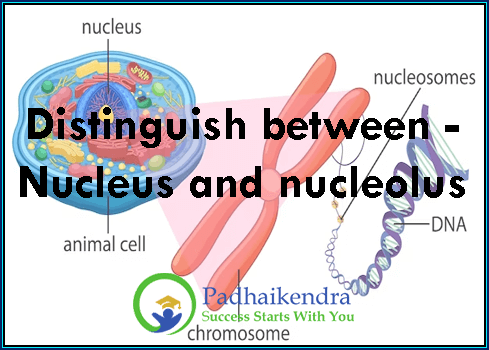The nucleus and nucleolus are both components of the eukaryotic cell, with different structures and functions:
- Structure: The nucleus is the largest organelle in the eukaryotic cell, and it is surrounded by a double-layered nuclear membrane. The nucleus contains genetic material in the form of chromosomes, which are made up of DNA and associated proteins. The nucleolus is a small, round organelle found inside the nucleus. It is not surrounded by a membrane and is composed of RNA and proteins.
- Composition: The nucleus contains genetic material in the form of chromosomes, which are made up of DNA and associated proteins. It also contains nucleoplasm, a gel-like substance that fills the nucleus. The nucleolus is composed of RNA and proteins, including ribosomal RNA (rRNA) and ribosomal proteins.
- Function: The nucleus is the control center of the cell, and it is responsible for regulating gene expression, DNA replication, and cell division. It also protects the genetic material from damage. The nucleolus is involved in the synthesis of ribosomes, which are responsible for protein synthesis.
- Location: The nucleus is located in the center of the cell, whereas the nucleolus is found inside the nucleus.
In summary, the nucleus and nucleolus are two distinct components of the eukaryotic cell. The nucleus is the largest organelle in the cell, and it contains genetic material in the form of chromosomes. The nucleolus is a small, round organelle found inside the nucleus, and it is involved in the synthesis of ribosomes.





